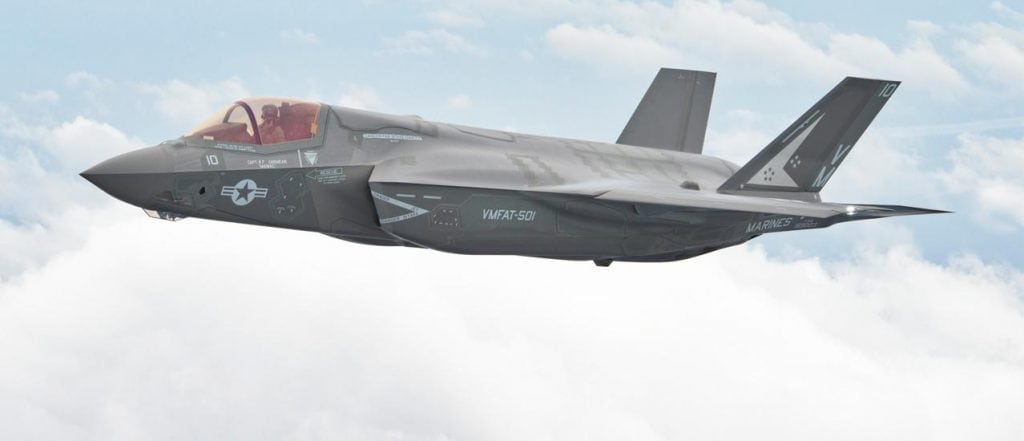
F-35 Lightning II. Photo courtsy of Lockheed Martin
Lockheed Martin is feeling bullish about the F-35 Lightning II, according to CEO Marilyn Hewson and CFO Bruce Tanner. Sales are up, more countries are buying in and the company is even looking into ways to leverage the F-35’s avionics for use in its Aegis missile-defense platform.
That last feat, and others like it, could be aided by the $200 million that Lockheed Martin is putting into training and research and development. Hewson said that investment is possible because of U.S. President Trump’s new tax reform bill.
“The New lax reduces the combined U.S. corporate tax rate from the highest in the industrialized world, bringing it in like with the tax rates used in the most advanced economies,” Hewson said during the company’s fourth-quarter and year-end 2017 earnings conference call Jan. 29. “This will enable us and just as importantly many of our supply chain partners to invest in transformative tech and make decisions that we believe will enhance our competitive position in the 21st century.”
According to Tanner, the tax rate results in a 10-point drop for Bethesda, Maryland-based Lockheed Martin, down to 18% or less, leaving the company flush with cash for the next couple years.
By that point, F-35 production should be approaching 150 per year. For 2018, 90 deliveries are expected — most of them part of the U.S.’s $8.5 billion order — up from 2017’s 66. Tanner said full production is expected to begin after limited rate initial production run 14, but praised the F-35 program for the quantities they are already delivering.
“When you’re delivering 90 aircraft, or 90 mission systems or 90 of anything, that’s a pretty high production rate,” he said. “Technically, we’re in low-rate initial production, but the quantities are very, very high … at the volume we’re talking about now, it feels like we’re in a production program.”
Of course, to hit those projections and keep the orders coming, Lockheed Martin will need to iron out the issues that are holding it back from reaching U.S. Defense Department fleet readiness criteria and other concerns such as the sustainment woes that have kept the plane a frequent target of criticism for being over budget and behind schedule.
But Hewson and Tanner didn’t sound worried about that in the call. Even at 66 deliveries, Lockheed Martin said, the F-35 was the primary driver in Aeronautics sales improving by 13% in 2017. The company’s sales on the whole grew by 8%, totaling a record $51 billion. Indeed, it saw at least modest growth in all business divisions, claiming a 9% improvement in missiles and fire control sales, 6% in rotary and mission systems and 1% in space.
Some of the extra money that Lockheed Martin has from its strong 2017 and, especially, the Trump administration’s business-friendly tax policies, is going back into research. Missile defense is a priority for both the company and the U.S. government, and Hewson said that left-of-launch missile defense — destroying threats while they are still on the launch pad — is a major focus of Lockheed Martin’s research.
That F-35/Aegis combination it has been testing is one potential solution.
“No one has the portfolio that Lockheed Martin does in terms of layered defense,” according to Tanner. “The incredible fusion of sensors from an F-35 and being able to feed that to an Aegis system, for instance. Having said that, what’s termed ‘left-of-launch’ is a vexing problem to be solved … It’s high on our list, and definitely one that we are investing in and one that we will continue to invest in with our technologies going forward because it is an issue for us.”